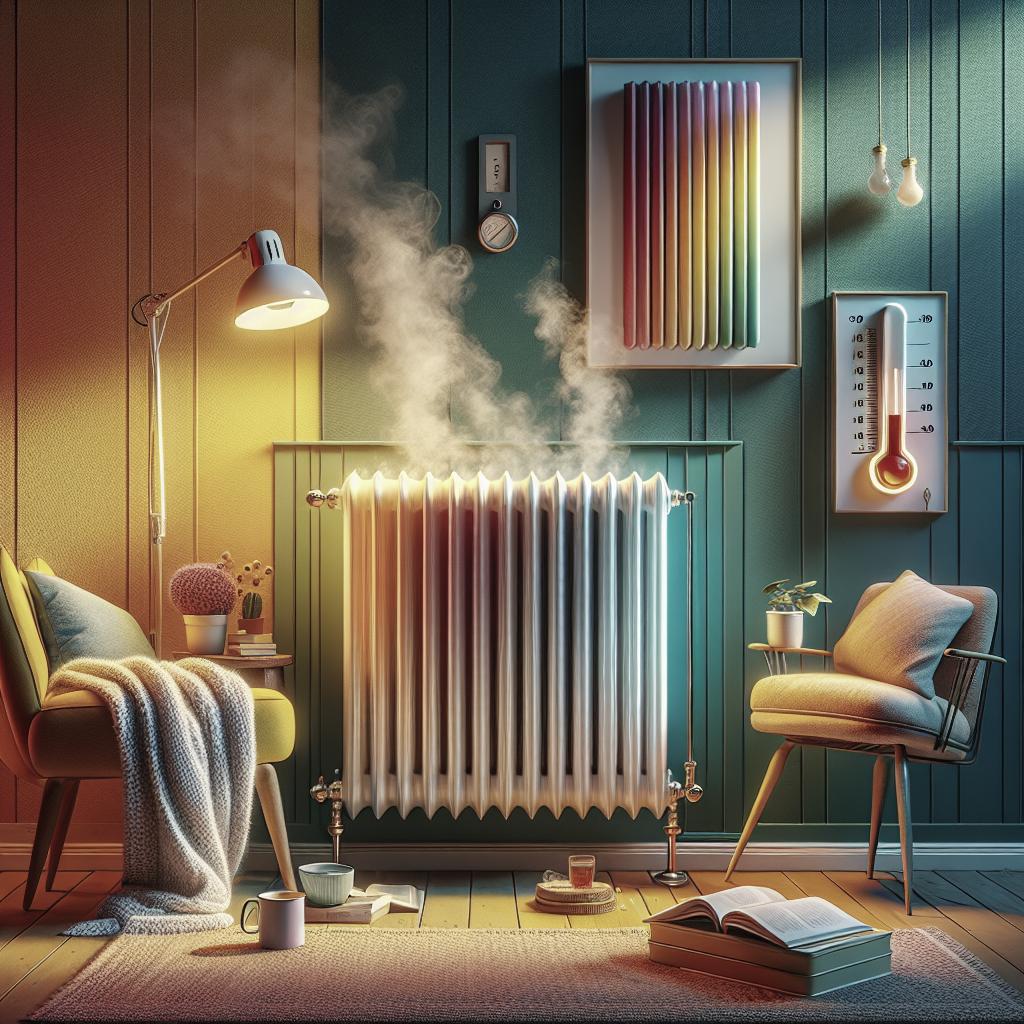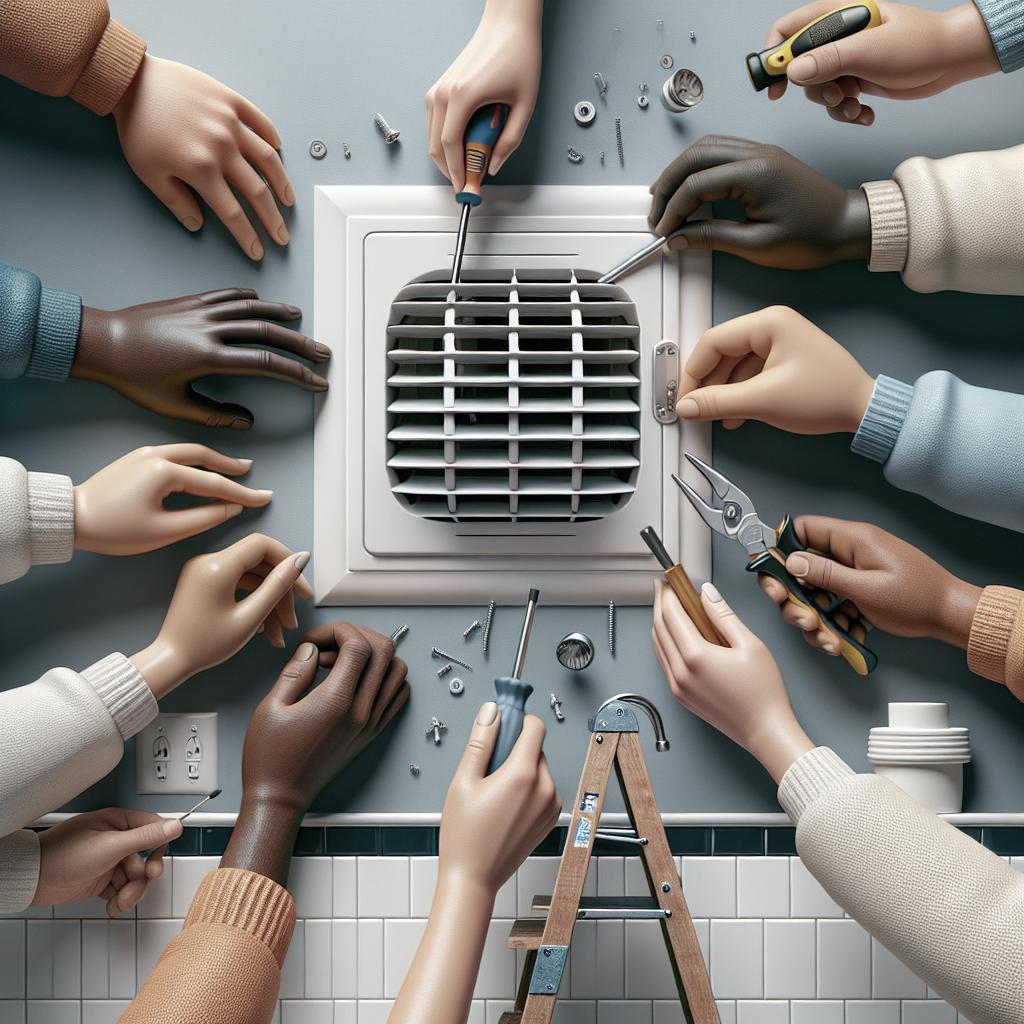Radiators have been a staple heating solution in homes for centuries, providing much-needed warmth during the cold months of the year. Despite their long-standing presence, there’s still a lot of curiosity about how they function and, more importantly, how hot they can get. In this comprehensive blog post, we’ll delve into the major differences between hot water and steam radiators, their key features, appearance, repair and maintenance needs, humidity control, noise levels, and energy use. We’ll also highlight the top brands for each type and wrap it up with a succinct comparison to help you make the best choice for your needs.
Hot Water vs. Steam Radiator: Major Differences
When choosing between hot water and steam radiators, it’s essential to understand their fundamental operational differences. This knowledge can guide you in selecting the best heating solution for your home based on your specific requirements. While both types achieve the primary goal of heating a space, the methods they use to do so diverge significantly.
A hot water radiator operates by circulating hot water through pipes connected to a boiler. In contrast, a steam radiator relies on steam generated from boiling water. The steam travels through the pipes and radiates heat once it condenses back into water. Though both systems use water, their heat transfer methods create distinct functional and maintenance requirements.
Key Features
Hot Water Radiator
Hot water radiators typically operate at a lower temperature than their steam counterparts, generally between 140°F to 180°F (60°C to 82°C). These radiators provide a consistent level of heat, making them a comfortable choice for many homes. The system includes a thermostat that maintains the desired room temperature by regulating the hot water flow.
The even heat distribution of hot water radiators makes them efficient and minimizes cold spots within a room. Additionally, the heat dissipates gradually, providing a more constant temperature, which contributes to long-term energy savings.
Steam Radiator
Steam radiators usually operate at higher temperatures, ranging from 212°F (100°C) to upwards of 250°F (121°C). This offers the advantage of rapid heating, making steam radiators particularly useful in environments where quick warmth is needed. However, the high temperature can sometimes create hotspots, which may not be as comfortable as the more evenly distributed heat from hot water radiators.
One of the unique features of steam radiators is the distinct hissing sound they produce when the steam condenses back into water. This contributes to both their charm and their tactile presence in a home. Steam radiators also tend to have simpler designs with fewer moving parts, which can simplify some aspects of maintenance.
Appearance
Hot Water Radiator
Hot water radiators offer a variety of aesthetic options, from traditional cast iron designs to modern, sleek panels. The flexibility in design allows them to blend seamlessly with different interior décors. They can be discreetly mounted along baseboards or be a prominent design feature within a room.
Due to their lower operational temperatures, hot water radiators can use materials like aluminum or steel, which offer more contemporary styling choices. These options can make hot water radiators an attractive option for those looking to maintain a particular aesthetic in their home.
Steam Radiator
Steam radiators are often more classic in their appearance, typically featuring bulky cast iron designs that are reminiscent of older architectural styles. These radiators can add a vintage charm to any home, fitting well in both historic and traditionally styled interiors.
While the classic appearance of steam radiators can be a boon for those looking to preserve a certain look, it’s worth noting that these units may not always blend well with modern interiors. Still, their robust appearance can serve as a nostalgic element or focal point within a room.
Tip
If you’re undecided based on appearance alone, consider your overall interior design and the era of your home. Classic homes might benefit from the vintage look of steam radiators, while more modern spaces might find hot water radiators more aesthetically pleasing.
Best for Appearance: Tied
Ultimately, both hot water and steam radiators have their own aesthetic advantages. The best choice largely depends on your specific décor preferences and the style of your home. Therefore, we consider this category a tie.
Repair and Maintenance
Hot Water Radiator
Hot water radiators generally require regular maintenance but are straightforward for homeowners to manage. The main components that need attention are the boiler, the pipes, and the valves. Over time, air can become trapped in the system, requiring bleeding to maintain efficiency.
Annual inspections by professionals can keep hot water systems running smoothly, as this type of radiator is prone to water leaks or pressure issues. The lower operational temperature also means less wear and tear on the system parts.
Steam Radiator
Steam radiators have fewer components, which can simplify some maintenance tasks. However, they still require regular upkeep, including the occasional bleeding of the air vents and checking the boiler system. As they operate at higher temperatures, parts may deteriorate more quickly, necessitating more frequent replacements.
One common issue with steam radiators is the buildup of sludge in the pipes, which can affect efficiency. Regular flushing of the system can mitigate this problem, ensuring optimal performance.
Tip
Regardless of the type you choose, routine maintenance can significantly extend the life of your radiator system. Engaging with professional services for annual inspections can prevent most serious issues and keep your system running efficiently.
Best for Repair and Maintenance: Hot Water Radiator
The lower operational temperature and straightforward maintenance procedures often make hot water radiators the more manageable option for homeowners, giving them an edge in this category.
Humidity
Hot Water Radiator
Hot water radiators do not significantly impact the humidity levels in your home. They provide dry, even heat that maintains a consistent environment without affecting the air’s moisture content. This can be particularly advantageous if you live in an area with high humidity.
For homes that are already dry, the lack of humidity can sometimes exacerbate the condition, especially during the winter. In such cases, a separate humidifier might be necessary to maintain comfortable air quality.
Steam Radiator
Steam radiators add moisture to the air as they release steam, which can increase indoor humidity levels. This is beneficial in dry climates or during winter months when heating systems often dry out the air in a home.
However, for homes in already humid environments, the added moisture from steam radiators might cause discomfort or contribute to mold growth. Balancing indoor humidity becomes crucial in such scenarios.
Best for Humidity: Steam Radiator
If increasing indoor humidity is a priority, steam radiators offer a clear benefit over hot water systems. Their ability to add moisture to the air can enhance comfort, particularly in dry conditions.
Noise
Hot Water Radiator
Hot water radiators generally operate quietly, with minimal noise disruptions. The movement of water and the operation of the boiler are typically the only audible components, making them an excellent choice for noise-sensitive environments.
The consistent and even heating provided by hot water radiators means there’s rarely a need for sudden temperature adjustments, further contributing to their quiet operation.
Steam Radiator
Steam radiators are often noisier, due to the distinct hissing and clanking sounds they produce when steam condenses back into water. These noises, while sometimes charming, can be disruptive, especially at night or in quiet settings.
While the sounds are a normal part of operation, they can be minimized by ensuring regular maintenance and addressing any air trapped in the system.
Best for Noise: Hot Water Radiator
For those who value a quiet environment, hot water radiators are typically the better choice. Their operation is generally less intrusive, making them ideal for bedrooms and study areas.
Energy Use
Hot Water Radiator
Hot water radiators are generally more energy-efficient than steam radiators. The consistent, lower-temperature operation allows for sustained heating with less energy expenditure. Modern systems often include programmable thermostats, further enhancing energy efficiency.
The even heat distribution characteristic of hot water radiators reduces the need to frequently adjust temperatures, contributing to long-term energy savings.
Steam Radiator
Steam radiators, operating at higher temperatures, often consume more energy. Their rapid heating capability is offset by slower cool-down periods, which can lead to higher overall energy use. Often, these systems are less flexible in terms of thermostat controls, making it harder to efficiently manage energy consumption.
However, steam radiators can be crucial for quick heating requirements, often balancing their energy consumption with the benefit of immediate warmth.
Best for Energy Use: Hot Water Radiator
Hot water radiators stand out for their energy efficiency, making them the preferable option for those looking to minimize energy consumption and reduce utility bills.
The Verdict
Both hot water and steam radiators have their unique advantages and distinct challenges. Your choice should align with your specific needs, whether you prioritize quick heating, quiet operation, energy efficiency, or design aesthetics. With comprehensive understanding, you can select the best radiator system that fits your lifestyle and home environment.
Top Brands
When it comes to choosing a radiator, brand reputation and reliability are critical considerations. Some of the top brands known for their quality radiators include:
- Runtal – Known for their sleek designs and efficient hot water radiators.
- Slant/Fin – Offers both hot water and steam radiators; well-regarded for reliability.
- Myson – Renowned for contemporary hot water radiator designs with excellent efficiency.
- Burnham – Provides a range of dependable steam radiators ideal for rapid heating.
More from The Spruce
If you’re interested in more home heating options, helpful maintenance tips, or energy-saving advice, be sure to check out our other articles on The Spruce. We offer a range of content to help you create a comfortable, efficient, and stylish living space.
Lessons learned
| Criteria | Hot Water Radiator | Steam Radiator | Best Choice |
|---|---|---|---|
| Temperature Range | 140°F to 180°F (60°C to 82°C) | 212°F to 250°F (100°C to 121°C) | Varies by need |
| Appearance | Varies (traditional to modern) | Classic cast iron | Tied |
| Maintenance | Regular, less wear and tear | Regular, more wear and tear | Hot Water Radiator |
| Humidity | Neutral | Increases indoors | Steam Radiator |
| Noise | Quiet | Can be noisy | Hot Water Radiator |
| Energy Use | More efficient | Higher consumption | Hot Water Radiator |
| Best For |
|
|
Depends on specific needs |

